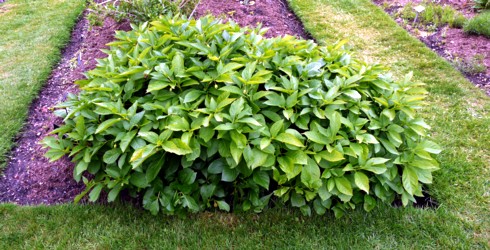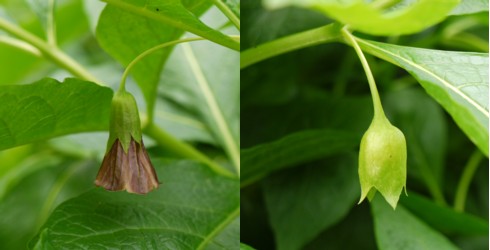Scopolia carniolica Jacq
Scopolia carniolica is a species of medicinal plant from central and eastern Europe.
It is a member of the Solanaceae family that also includes potatoes and tomatoes and other medicinal plants.
This plant has hallucinogenic properties and was regarded as magical in medieval Europe, where it was used as a sedative, a cosmetic and even as a ‘truth serum’.
It produces tropane alkoloids - active compounds that are used today to treat motion sickness.
Scopolia carniolica is found in three non-overlapping areas in Europe. Its distribution suggests it is a relict from the Tertiary period and survived the Quarternary period in isolated refuges that were not covered by ice.
Species detail
The plant was formally described by the Austrian botanist Nicolaus Jacquin in 1764, although the earliest printed mention of it dates back to as early as 1563.
It was named by Jacquin Scopola - which was changed to Scopolia by George Don in 1837 - in honour of Italian naturalist Giovanni Antonio Scopoli.
The species name carnolica refers to the historical region of Carniola, now part of Slovenia, from where the plant was collected by Scopoli in 1760.
-

Taxonomy
Scopolia carniolica is related to food plants such as potatoes, tomatoes and peppers as well as other ornamental and medicinal plants. Find out more about their similarities and differences.
-

Distribution
The plant is found in three non-overlapping areas of central and south-eastern Europe. Find out what this tells us about the plants evolutionary history.
-

Ethnobotanical use
Scopolia carniolica fascinated Slavic people in medieval Europe for generations. It was considered magical and often associated with witchcraft, but was also used cosmetically and as an anaethesetic. Find out what its active ingredient is used for today.
-

Biology
Scopolia carniolica forms a bush-like plant when numerous shoots sprout from an underground rhizome. Find out more about the appearance and reproductive processes of this unusual herb.
-

References
Get more information on Scopolia carniolica.
Images

Scopolia carniolica growing in Chelsea Physic Garden.

Flowering stem of Scopolia carniolica, with two flowers (top) and one fruit (bottom).

Flower (left) and fruit (right) of Scopolia carniolica.

Active ingredient of Scopolia carniolica rhizome extract - scopolamine.

Phylogenetic tree showing Scopolia and its closest relatives.
Author
Jacek Wajer
Curatorial assistant
Department of Botony
Author's quote
"This plant was the object of my master's degree (2004–2006). I was investigating embryology of this species. I came to the conclusion that adventitious polyembryony, which was reported in Scopolia in 1920s and 1960s, is a very sporadic process in this plant, and does not lead to the occurrence of more than one embryo per seed."
Toolbox
Glossary
Calyx
Group of sepals.
Corolla
Group of petals.
Ovules
Structures that develop into seeds when fertilised.
Parasympathetic
Part of the nervous system that regulates muscle contraction.
Relict species
Species that were formerly widespread but now only occupy small areas.
Rhizome
Underground stem of a plant.
